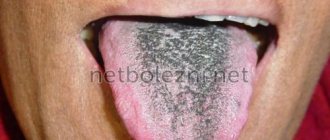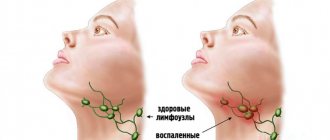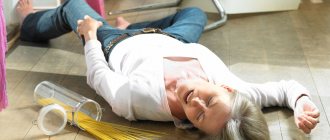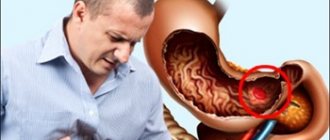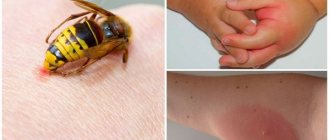Diathesis is a controversial concept. In modern domestic pediatrics and therapy, this concept is no longer used in everyday practice. Diathesis is essentially the body’s predisposition to the development of certain pathological reactions. Diathesis is also called constitutional anomalies. Previously, three types of diathesis were distinguished: exudative-catarrhal, lymphatic-hypoplastic, neuro-arthritic. Each of them included certain criteria. Exudative-catarrhal diathesis is characterized by a person’s tendency to allergies and the development of infectious diseases. Lymphatic-hypoplastic diathesis is characterized by excess weight, enlarged lymph nodes, enlarged tonsils and adenoids. Such children often suffer from respiratory diseases and are also prone to allergies. Neuro-arthritic diathesis is characterized by changes in metabolism caused by increased excitability of the nervous system. Such people often experience pain in the knees and back, urinary incontinence, night terrors, decreased appetite, emotional instability, and stuttering. It is worth emphasizing that the most characteristic symptom of this disease is cyclically occurring vomiting (the so-called acetonemic syndrome in children). The described symptoms of diathesis often occur in childhood, so these manifestations are less pronounced in adults.
Using the term “diathesis” nowadays, pediatricians and therapists often mean exudative-catarrhal diathesis, which has a more modern concept – “ atopic dermatitis”. Therefore, further consideration of this topic will be devoted to this particular disease.
What does diathesis lead to?
If an exacerbation is not treated in time, the child’s allergic diathesis can become chronic.
In addition, allergic diathesis is the first stage of the atopic march. The atopic march is the sequential development in the same child of first atopic dermatitis, then allergic rhinitis, and by the age of 5-6 years - bronchial asthma. Therefore, the outcome of the entire atopic disease, in particular the development of bronchial asthma, largely depends on the treatment tactics of atopic dermatitis.
Why should you contact the Mama Papa Ya clinic?
When a child has diathesis, it is important to pay attention to the little things - organizing nutrition, care, drawing up an individual vaccination calendar, a regime of hardening procedures, and so on. Often an examination by specialized specialists is required. The network of family clinics “Mama Papa Ya” offers medical services for the prevention and treatment of diathesis. By contacting one of our clinic branches located in Moscow or other cities, you will receive:
- consultation with a qualified pediatrician on all issues of interest;
- necessary diagnostic and treatment procedures;
- visiting all the necessary doctors in one clinic;
- possibility of observing children of different ages.
Make an appointment with a doctor by phone or on our website.
Reviews
Good clinic, good doctor!
Raisa Vasilievna can clearly and clearly explain what the problem is. If something is wrong, she speaks about everything directly, not in a veiled way, as other doctors sometimes do. I don’t regret that I ended up with her. Anna
I would like to express my gratitude to the staff of the clinic: Mom, Dad, and me. The clinic has a very friendly atmosphere, a very friendly and cheerful team and highly qualified specialists. Thank you very much! I wish your clinic prosperity.
Anonymous user
Today I had a mole removed on my face from dermatologist I.A. Kodareva. The doctor is very neat! Correct! Thanks a lot! Administrator Yulia Borshchevskaya is friendly and accurately fulfills her duties.
Belova E.M.
Today I was treated at the clinic, I was satisfied with the staff, as well as the gynecologist. Everyone treats patients with respect and attention. Many thanks to them and continued prosperity.
Anonymous user
The Mama Papa Ya clinic in Lyubertsy is very good. The team is friendly and responsive. I recommend this clinic to all my friends. Thanks to all doctors and administrators. I wish the clinic prosperity and many adequate clients.
Iratyev V.V.
We visited the “Mama Papa Ya” Clinic with our child. A consultation with a pediatric cardiologist was needed. I liked the clinic. Good service, doctors. There was no queue, everything was the same price.
Evgeniya
I liked the first visit. They examined me carefully, prescribed additional examinations, and gave me good recommendations. I will continue treatment further; I liked the conditions at the clinic.
Christina
The doctor carefully examined my husband, prescribed an ECG and made a preliminary diagnosis. She gave recommendations on our situation and ordered additional examination. No comments so far. Financial agreements have been met.
Marina Petrovna
I really liked the clinic. Helpful staff. I had an appointment with gynecologist E.A. Mikhailova. I was satisfied, there are more such doctors. Thank you!!!
Olga
How to recognize atopic dermatitis in time?
Clinical manifestations of atopic dermatitis - food allergies - can be as follows:
- Allergic skin lesions: the skin becomes dry, redness, rashes, peeling, cracks, weeping appear - these manifestations are localized on the skin of the cheeks, forehead, neck and scalp, and later the process is localized in the area of the extensor and flexion surfaces of the joints;
- Atopic dermatitis is often combined with gastrointestinal disorders (regurgitation, nausea, vomiting, colic, flatulence, diarrhea, constipation, unstable stool), acute respiratory viral infections, obstructive syndrome, allergic rhinitis.
At the first such symptoms, you should immediately consult a doctor.
Clinical researches
The effectiveness, safety and tolerability of La-Cri products have been clinically proven. The products are recommended by the Union of Pediatricians of Russia. During clinical studies, specialists were able to record impressive results.
Cream "La-Cri" for dry skin:
- eliminates dryness and flaking;
- retains the skin's own moisture;
- protects skin from wind and cold.
Cleansing gel “La-Cri”:
- gently cleanses the skin;
- relieves redness and itching;
- restores and nourishes the skin.
Emulsion "La-Cri":
- moisturizes and nourishes the skin;
- relieves itching and irritation;
- soothes and restores the skin.
Cream "La-Cri" for dry skin:
- eliminates dryness and flaking;
- retains the skin's own moisture;
- protects skin from cold and wind.
Diaper cream La-Cri:
- creates a protective barrier;
- relieves redness and irritation;
- provides gentle skin care.
Lip balm La Cree:
- relieves the feeling of discomfort and dryness;
- restores dry and cracked lips;
- moisturizes and protects the skin from wind and cold.
Sources:
- I.A. Gorlanov, L.M. Leina, I.R. Milyavskaya, Skin of newborns: differential diagnosis of pathological conditions, features of care https://cyberleninka.ru/article/v/kozha-novorozhdennyh-differentsialnaya-diagnostika-patologicheskih-sostoyaniy-osobennosti-uhoda
- N.D. Odinaeva, G.V. Yatsyk, I.A. Belyaeva Correction of dry skin in newborns, Pediatrics journal, 2011 https://cyberleninka.ru/article/v/korrektsiya-suhosti-kozhi-u-novorozhdennyh-detey
- T.A. Bokova, Diaper (diaper) dermatitis in a newborn, Medical Council journal, 2018 https://cyberleninka.ru/article/v/pampersnyy-pelenochnyy-dermatit-u-novorozhdennogo-sovremennye-podhody-k-profilaktike-i-lecheniy
Photos of diathesis
Photo album on the disease
What to do if symptoms of diathesis appear?
Nursing mothers should remember that when symptoms of diathesis appear in infants, they themselves need to follow a diet and exclude from their diet foods the consumption of which leads to an exacerbation of the disease. It must be remembered that restricting the diet is not an end in itself. Products are excluded for a time; if their exclusion leads to improvement in the child, then a conclusion is drawn about the connection of such products with an allergic reaction and vice versa. If it turns out that excluding a product does not affect the course of the disease, then there is no point in limiting yourself.
Products with varying levels of allergenic potential:
- The following have a high allergenic potential: whole cow's milk; eggs; caviar; wheat, rye; carrots, tomatoes, bell peppers, celery; strawberries, wild strawberries, raspberries; citrus fruits, pineapples, pomegranates, kiwi, mango, persimmon, melon; coffee, cocoa; chocolate; mushrooms; nuts; honey;
- Average allergenic potential: beef; buckwheat, oats, rice; peas, beans, soybeans; potatoes, beets; peaches, apricots, cranberries, lingonberries, cherries, blueberries, black currants, rose hips, bananas;
- Low allergenic potential: fermented milk products; horse meat, rabbit meat, turkey, lean pork, lean lamb; cauliflower, white cabbage, broccoli, zucchini, squash, cucumbers; green varieties of apples and pears, white and red currants, white and yellow cherries, yellow varieties of plums; garden greens (parsley, dill);
If the child is bottle-fed, then special food is selected for children with allergies. If the child has already begun to be given complementary foods, then you should remove foods that can cause food allergies one by one, so as not to remove excess foods. It should be remembered that unreasonable dietary restrictions, especially long-term ones, can lead to disturbances in the development of the body.
How to relieve exacerbation of diathesis?
You can prevent the development of an allergic reaction if you immediately take Enterosgel. The drug removes allergens and toxic substances, avoiding the use of excess medications. You should adhere to a hypoallergenic diet.
If the symptoms of diathesis have not disappeared, you need to consult a doctor who will supplement the treatment with external, anti-inflammatory and antihistamine drugs.
Enterosgel is the only enterosorbent that is officially recommended for children from the first days of life. Kazan and Moscow Pediatric Schools and Allergy Centers in Russia and the CIS and Far Abroad (from New Zealand to Great Britain) widely use Enterosgel for allergic dermatoses in clinical settings.
One of the methods of treating diathesis is local therapy.
The complex treatment of diathesis includes local therapy in the form of ointments and gels. They should only be prescribed by a specialist, and he takes this issue very seriously, since the main role in the appearance of signs of diathesis is given to allergens that affect the child’s skin.
What drugs are often included in the list prescribed by a doctor:
- To soften and quickly heal the skin: Bepanten, zinc ointment, Desitin (zinc-based ointment).
- For disinfection, softening and prevention of the formation of new crusts: Diaderm, Glutamol.
- To suppress an allergic reaction: Fenistil, Vibrocil, Cetrin.
It is worth considering that ointments are not the main way to treat diathesis, since they do not affect the cause in any way. Local therapy is used as an auxiliary method. The basis of treatment should be diet, proper care, and avoidance of contact with allergens.
Recommended regimen for using Enterosgel during exacerbation
- First of all, nursing mothers are recommended to take Enterosgel internally themselves to improve the quality of milk (1 tablespoon three times a day);
- A child under one year of age is given Enterosgel (paste) without the “sweet” label immediately before meals, before each feeding;
- For infants up to 6 months: add 2/3 of water or breast milk to 1/3 teaspoon of Enterosgel paste and give before each feeding;
- For children under one year of age Enterosgel: 1/2 teaspoon + ½ teaspoon of water, also before each feeding;
- After a year, Enterosgel is usually given simply 1-2 teaspoons three times a day, added to fruit puree;
- Locally, when it gets wet, periodically apply Enterosgel, diluted with 1/3 of the Tsindol mash, to the affected areas, and alternate this procedure with conventional local remedies.
Recommended regimen for using Enterosgel for prevention
Prophylactic administration of Enterosgel is usually carried out twice a day, in the morning and at night, in the dosages indicated above and in the manner described. If no exacerbation occurs within a month, you can stop taking Enterosgel prophylactically.
Locally, to care for “problem” areas (perineum, natural folds), Enterosgel is used once a day, usually before putting on a diaper at night or before an air bath. The diaper area is treated with Enterosgel mixed 1:1 with water (applied simply with the palms of the mother).
- Diet for diathesis;
- Treatment of diathesis in infants;
- Treatment of diathesis in children;
- Treatment of diathesis in newborns.
Diet
As a rule, the first signs of an allergy appear in a child 4-6 hours after eating. Therefore, to accurately identify the allergen, do not mix products!
If you are sensitive to any product, it is excluded from the child’s diet for some time. Then you can try again. Scientists have proven that allergies can only be cured with the help of an allergen. After all, even to poison in small doses the body gets used to it.
Important: if a reaction to complementary foods occurs in the form of rashes, it is necessary to prescribe antihistamines and sorbents that help remove the allergen faster.
If a woman is breastfeeding, then she needs to carefully monitor her diet and give up some “tasty” things. Highly allergenic foods such as chocolate, coffee, marinades, and smoked foods should be excluded from the diet.
Children suffering from allergies are especially careful when introducing their first complementary foods. As a rule, it is recommended to start with vegetables (zucchini, cauliflower). Doctors recommend using industrially produced ready-made food, as it is made from proven quality products and contains the required amount of vitamins.
Cow's milk intolerance is one of the causes of diathesis. In infants it usually appears when the child is transferred to artificial feeding. In this case, doctors recommend abandoning formula milk and switching to formulas based on soy protein (also called lactose-free), hypoallergenic, or using goat milk. If a child has been experiencing allergic symptoms for a long time in the form of frequent, loose and foaming stools, it is recommended to introduce fermented milk products containing bifidobacteria into his diet.
In any case, you cannot independently choose baby food for children with diathesis. This should be done by a doctor, based on the child’s characteristics.
The body of a one-year-old child is still very weak and susceptible to influence. Diathesis in such children can also be caused by familiar foods. Even an extra spoonful of your favorite porridge, eaten “for dad,” can cause anxiety. Try not to overfeed your baby. It is advisable to feed him more often, but in small portions.
When a child reaches the age of three, parents often stop paying due attention to his nutrition and seat the child at a common table. This is a huge burden even for a completely healthy baby, not to mention one with allergies. It is necessary to minimize the consumption of salt and sugar, as well as hot seasonings and spices.
Recommendations for regimen and nutrition for various forms of diathesis
| Appointments | Exudative-catarrhal diathesis | Lymphatic-hypoplastic diathesis | Neuro-arthritic diathesis |
| Diet, including for mothers breastfeeding | Hypoallergenic, with the exception of obligate allergens, red and yellow-colored vegetables and fruits. Limiting broths and whole cow's milk. Boiled meat and fish. Fermented milk products, vegetables, fruits. In severe cases - an elimination diet, identification and exclusion of the causative agent | Age table with limitation of flour products and cereals. The predominance of vegetables, fruits, and lactic acid products in the diet. For allergic manifestations - the same as for exudative-catarrhal diathesis. | Age table with the limitation or exclusion of broths, fried, stewed and canned meat, sausages, smoked meats, spicy dishes, coffee, cocoa, citrus fruits and a number of vegetables (sorrel, spinach, radishes, radishes, cauliflower, green peas). Dairy-vegetable table, boiled meat and fish. |
| Observation | Keeping a food diary, individual vaccination schedule. Monitoring the regularity and quality of stool. If necessary, treatment of dysbiosis. | ||
| Careful care | Constantly | Constantly | Constantly |
| Home education | Up to 3 years | Up to 5-6 years | Up to 3 years |
Recommendations for the regimen
Be sure to maintain a hypoallergenic environment in the house - regularly ventilate, carry out wet cleaning at least 2 times a day. It is recommended to remove all carpets and interior items that accumulate dust. Books and toys should be stored in closed cabinets. The presence of animals in the house is undesirable (an allergic reaction is caused not by the fur itself, but by the scales of the animal’s skin). Even harmless fish can cause an exacerbation of diathesis; it is also better to remove indoor flowers.
For children suffering from diathesis, vaccinations are administered after a preliminary course of antihistamines.
What is diathesis: a disease or a reaction of the body?
Translated from Greek, the word “diathesis” means a tendency, a predisposition to something. Diathesis cannot be regarded as a disease. It is more correct to consider it a hereditary predisposition of the body, an inadequate response to certain factors, for example, food.
Each of us inherited from our parents a whole “genetic archive”, for example, eye color, nose shape, predisposition to allergies or an ear for music.
The tendency to diseases is realized when the body is exposed to various unfavorable factors: stress, bad habits, polluted environment, unhealthy diet, occupational hazards.
Since predispositions are different, scientists have described various diathesis. The most common are exudative-catarrhal diathesis, lymphatic-hypoplastic and neuro-arthritic, also known as uric acid diathesis.
Hemorrhagic and salt diathesis are considered as separate diseases. Hemorrhagic refers to blood diseases, and saline refers to metabolic diseases.
Exudative-catarrhal diathesis
“Owners” of allergic or exudative-catarrhal diathesis are predisposed to infectious diseases and allergies.
The following factors provoke exudative diathesis:
- unfavorable course of pregnancy (toxicosis, infections);
- genetic predisposition (the child’s parents are allergic);
- smoking matter;
- maternal nutrition during breastfeeding;
- complications after childbirth (birth trauma, fetal hypoxia);
- unfavorable living conditions, industrial hazards;
- medications, household chemicals and other potential allergens.
Often, babies under one year old are bothered by exudative diathesis; they cry and sleep poorly due to itchy skin.
Pets can also become “culprits” of exudative diathesis: cats, dogs, hamsters.
Exudative-catarrhal diathesis can manifest itself in different ways.
Atopic diathesis: the child develops redness, dry skin, pimples, peeling or diaper rash on the cheeks.
Allergic diathesis on the face can be a harbinger of allergic rhinitis and bronchial asthma.
The mucous membrane of the eye also often becomes a target for exudative-catarrhal diathesis. The patient is concerned about itching, lacrimation, swelling and redness of the conjunctiva, and photophobia.
Early detection and timely treatment of diathesis will prevent the development of autoimmune and allergic processes.
Food allergens that provoke exudative-catarrhal diathesis can cause enterocolitis. The mother notices that the child has bloating, diarrhea or constipation, and regurgitation of food. Older children with exudative-catarrhal diathesis report pain in the navel and nausea.
Breastfeeding mothers should remember: diathesis has appeared in infants - it’s time to “go on” a strict diet.
Diathesis in newborns who are on artificial nutrition involves the selection of special hypoallergenic mixtures, and when administering complementary feeding, the exclusion of potential food allergens.
For inflammation of the skin, pediatricians prescribe special lotions and ointments for diathesis.
Exudative diathesis in adults is usually called atopic dermatitis. Quite often, allergies in adults (hay fever, food allergies, asthma) can originate from childhood. That is, a consequence of exudative-catarrhal diathesis.
Causes
The consumption of the following products by a child or nursing mother can provoke the appearance of diathesis:
- cow's milk, or more precisely, cow's milk protein or milk sugar (lactose);
- egg white;
- purees and juices from orange or red fruits (especially strawberries, citrus fruits, wild strawberries, bananas);
- chocolate;
- products with preservatives and food colorings;
- seafood;
- pickles, marinades, sauces with spices.
The cause of diathesis in breastfed babies is errors in the mother's diet.
When hyperemia (redness) of the skin or rash appears, parents should remember what’s new in the diet in the coming days and exclude these foods.
Also, a provoking factor in the development of diathesis is non-compliance with hygiene, improper care of the child’s skin, and the use of inappropriate care products. It is necessary to use hypoallergenic creams and bathing products approved for use from birth.
Who is at risk:
Among children at risk, there is a group with abnormalities in the mother's pregnancy - toxicosis, infections, smoking, alcohol consumption. Also included here are disturbances in the course of labor – asphyxia, hypoxia.
Children most often suffer from diathesis:
- with a hereditary predisposition,
- with congenital disorders of the nervous system,
- low birth weight or, conversely, high birth weight,
- with dysbacteriosis,
- feeding on infant formula.
The manifestation of the disease can be caused by ARVI, vaccinations, especially at an early age. An increased risk of development is often combined with improper care, poor nutrition, poor living conditions, and a tense emotional environment in the family.
Almost any sudden change - climate change, vitamin deficiencies, household chemicals and even poor environmental conditions can give impetus to the development of atopy. The children's body is more sensitive to histamine (the main regulator of allergic reactions), so its release can be associated not only with foreign agents (for example, from food or washing powder), but also with natural conditions.
Lymphatic-hypoplastic diathesis
What does diathesis look like? Children are predisposed to sore throat, allergies, the formation of nasal polyps, and enlarged lymph nodes. They may have a positive Mantoux test.
Diathesis in newborns is manifested by pastiness, decreased muscle tone, lethargy, and adynamia. Babies can gain weight quickly and lose weight just as quickly.
Diathesis in infants may be accompanied by congenital malformations of internal organs.
Frequent ARVI occurs with high fever.
Diathesis does not appear on the face, but is more often located on the legs, buttocks, and in the folds of the skin. Fat fiber is unevenly distributed, with more of it on the lower part of the body.
Neuro-arthritic diathesis (uric acid)
This diathesis is characterized by an increase in the intensity of protein metabolism and an increase in the synthesis of uric acid.
Diathesis occurs in children whose parents are predisposed to gout, urolithiasis, hypertension, diabetes and vascular atherosclerosis.
Uric acid diathesis is provoked by meat foods. It promotes increased formation of uric acid salts - urates.
Diathesis in infants makes itself felt by poor weight gain, unstable stools, and poor appetite.
Children sleep poorly, are fearful, restless and the reason for this is, again, diathesis.
In children, symptoms of metabolic disorders manifest themselves in the form of periodic acetonemic vomiting.
Kidney diathesis can provoke bronchospasm, skin rashes, intestinal colic, constipation, pain in the heart, and decreased blood pressure. Often accompanying uric acid diathesis are enuresis and night terrors.
There are also positive aspects of uric acid diathesis: the products of protein metabolism stimulate the central nervous system and children begin to speak and read early, and have a good memory.
Uric acid diathesis leads to acidosis - a shift in the body's environment to the acidic side.
Kidney diathesis causes dehydration, electrolyte imbalance, and convulsions.
The targets of uric acid diathesis are joints and kidneys. An increase in the specific gravity of urates in the urine (a symptom of uric acid diathesis) in adults quite often causes stone formation in the renal pelvis and deposition of salt crystals in the joint capsules.
Diathesis in adults predisposes to obesity, gout, atherosclerosis, allergic dermatitis, and bronchial asthma.
To prevent diathesis in an infant from becoming the cause of the above-mentioned diseases over time, a nursing mother must follow recommendations regarding lifestyle and nutrition.
Hemorrhagic diathesis
Hemorrhagic diathesis is a whole group of congenital and acquired diseases accompanied by bleeding and hemorrhage.
Hereditary hemorrhagic diathesis “make themselves felt” already in childhood and “pursue” throughout life.
The main role in the occurrence of diathesis in infants is played by congenital defects of blood cells, deficiency of coagulation factors and defects in the vascular wall.
Acquired hemorrhagic diathesis develops while taking certain medications, infectious diseases, liver and kidney diseases.
Hemorrhagic diathesis in children. Symptoms
The main manifestation of all hemorrhagic diathesis is increased bleeding.
Nasal, uterine, stomach, and intestinal bleeding are possible. With frequent bleeding, anemia develops. Hemorrhagic rashes and “bruises” appear on the skin and mucous membranes.
If blood clotting is impaired as a result of a deficiency of clotting factors (hemophilia), diathesis in newborns is manifested by bleeding from the umbilical wound; bleeding can occur even with minor bruises, scratches and injuries.
Hemorrhagic diathesis in adults is complicated by hemorrhages in the internal organs, in the retina of the eye, in the cavity of the joints, in the membranes of the brain.
Diathesis in an infant and an adult can manifest itself as vasculitis, hemophilia, thrombocytopenia. Hematologists know how to treat diathesis in children, adolescents and adults. Anti-inflammatory therapy, antihemophilic serum, blood clotting factors, hormones, and special ointments for diathesis are prescribed.
Salt diathesis
Salt diathesis is considered as a metabolic disease. As a result of disruption of biochemical processes, a large amount of salts accumulate in the urine.
Why does salt diathesis occur in adults and children? A number of factors contribute to the development of the disease:
- congenital deficiency of kidney enzymes;
- inflammatory kidney diseases;
- dietary habits (meat, legumes, chocolate).
Often diathesis in adults “makes itself known” with insufficient water consumption. The content of phosphates, urates, and oxalates in the urine increases; crystals form from the salts and “precipitate.”
Salt diathesis is manifested by painful and frequent urination and lower back pain. Over time, salt diathesis can lead to cystitis and kidney stones.
“Traces” of salt diathesis are present in various organs. Crystals accumulate in joint capsules, provoking the development of arthrosis and gouty arthritis.
Salt diathesis provokes hormonal “disruptions”, disrupting the functioning of the endocrine glands.
It is not difficult to identify salt diathesis: you need to pass a general urine test and undergo an ultrasound examination.
How to treat diathesis?
Human health largely depends on nutrition and lifestyle. Food affects overall well-being, mood, brain function and all internal organs. Malnutrition, like overeating, can cause various ailments.
Since food allergens are of great importance in the development of exudative-catarrhal diathesis, doctors recommend excluding foods that cause food allergies, for example, honey, seafood, nuts, sea fish, citrus fruits.
Food allergens often pass through mother's milk, causing diathesis in children. Treatment should begin with correction of the mother's diet. Unfortunately, not everyone follows medical recommendations and products from the “disgraced list” enter the body, provoking dangerous symptoms. And treatment must be started immediately to prevent anaphylaxis from developing.
Doctors prescribe elimination therapy, that is, the removal of toxic products and allergens from the body. This is possible thanks to gastric lavage, cleansing enema, injection of solutions into a vein and taking enterosorbents. Enterosgel is considered one of the best sorbents for the treatment of diathesis. For skin manifestations (rashes, dryness, cracks), a special ointment for diathesis is prescribed, containing anti-inflammatory and antiallergic components.
For neuro-arthritic diathesis and salt diathesis, meat dishes, broths, offal, mushrooms, sausage, radishes, sorrel, and chocolate are not recommended. Enterosgel will also help reduce the concentration of uric acid in the blood.
Salt diathesis. Treatment
Therapy for salt diathesis begins with correction of the water regime and diet. Depending on the detected salts, certain foods will be limited and herbal medicines will be prescribed. Enterosgel can help remove metabolic products.
Symptoms by age
Signs of diathesis vary depending on the form of its manifestation. It may appear as:
- negative reaction from the mucous membrane and skin (dermatitis, geographic tongue, milk scab),
- hypoplastic changes in lymph nodes (their increase throughout the body) and endocrine glands.
- Metabolic processes often suffer, usually increased secretion of uric acid, oxalates and phosphates.
Photo: gneiss - seborrheic dermatitis
Photo: geographic tongue - the presence of characteristic clearly separated discolored areas on the tongue
Photo: milk scab. Taken from the website of the Department of Dermatovenereology of the Tomsk Military Medical Institute
Diathesis in infants: exudative-catarrhal form
Synonyms: allergic, atopic diathesis
No additional diagnostic methods are used to make a diagnosis. The presence of diathesis can be determined by skin manifestations and data on the products that the child consumed.
When the baby is breastfed, symptoms of diathesis may occur after the mother consumes these products.
Manifestations can begin as early as the first month of life in the form of persistent diaper rash (not going away even with careful care), profuse prickly heat (even with mild overheating) and, finally, in the form of gray-yellow greasy crusts on the scalp and eyebrows. The child's skin is pale and dry.
Starting at 3 months of age, limited bright red spots may appear on the baby's cheeks, which subsequently become covered with a thin crust. Itching and pain are felt in these places. These are the so-called milk crusts or milk scabs - one of the characteristic manifestations of abnormal metabolism - exudative diathesis. It is also called allergic or atopic.
Manifestations in infants:
- frequent and loose stools with foam or a greenish tint,
- stomach pain,
- rash,
- redness on the cheeks (milk scab).
A child with diathesis is capricious, restless, may refuse to eat and sleep poorly. The appearance of the rash is accompanied by constant severe itching, so children older than one year can scratch the affected areas, which leads to a secondary infection and the appearance of purulent wounds. Infants react to itching by crying and increased physical activity.
If left untreated, the entire body is affected. At the initial stage of the acute form of the disease, redness of the skin is noted, then small blisters filled with transparent contents appear. Over time, the bubbles burst and crusts form in their place.
Diathesis is manifested not only by rashes, but also by indigestion (diarrhea) against the background of skin manifestations, a protracted course of inflammatory eye diseases (blepharitis, conjunctivitis), and obstructive bronchitis. Subsequently, this form of diathesis may be complicated by bronchial asthma.
With diathesis, the child develops increased sensitivity to certain foods and medications. Therefore, ordinary care and feeding are not sufficient for such a child; appropriate adjustments must be made to them.
By the end of two years, usually active signs are significantly reduced, and only a small percentage of children (about 10%) may manifest themselves at an older age in the form of bronchial asthma, eczema, and allergic reactions.
Diathesis at 3-6 years: lymphatic-hypoplastic
The lymphatic form is characterized by rapid fatigue of the child, usually he is pale, lethargic, overweight (or prone to obesity).
A distinctive feature of children with such a constitutional anomaly is an enlargement of the thymus gland (the main gland for the preparation of T-lymphocytes, which undergoes atrophy with age) and lymph nodes. The main symptoms of this form include:
- frequent respiratory infections,
- hoarseness, noisy breathing, shortness of breath due to an enlarged thymus (thymus gland)
The height of the process occurs between the ages of 3 and 6 years, then the negative manifestations almost completely disappear. There may be a slight delay in sexual development in adolescents.
Diathesis at 7-12 years old: neuro-arthritic form
For the arthritic form, the peak is school age (7-12 years). Children are often thin in appearance, but sudden weight gain in adolescents is possible. This type of constitution is noticeable even from infancy - the baby sleeps poorly, is excitable, restless, and eats poorly. Then, as you grow older, tics, nightmares, enuresis (urinary incontinence), and vomiting due to nervousness may increase. Children often complain of indigestion - vomiting, diarrhea, the smell of acetone on the breath, as well as intermittent pain in the joints.
This form is also characterized by the manifestation of spastic syndrome (increased muscle tone):
- bronchospasms,
- colic, constipation,
- increased likelihood of developing hypertension and heart disease.
In the book Children's diseases: a textbook, ed. A.A. Baranov provides the following comparative table:
| Sign | Exudative-catarrhal diathesis | Lymphatic-hypoplastic form | Neuro-arthritic form |
| Frequency in population | up to 60-70% | 10-12% | 2-3% |
| Timing of manifestation | first 3 months of life | second year | from 6-7 years and later |
| Timeframe for disappearance of manifestations | by the age of 3-4 years, 20-25% of children transform into allergic diseases | at puberty (in most children) | lasts for life |
| Causes | transient or genetically determined hyperproduction of IgE, adrenal insufficiency, allergies | dysfunction of the pituitary-adrenal axis, thymic hyperplasia, adrenal insufficiency | genetic defect in the metabolism of uric acid and purine bases, dysfunction of liver enzymes |
| Nervous system response | excitability, irritability | apathy, lethargy, stress intolerance, low blood pressure | accelerated development and excitability, neuropathic reactions |
| Body weight and length | age appropriate | more than the age norm (paratrophy) | loss of body weight with normal length, dystrophy |
| Body type | proportional, often asthenic | disproportionate, often hypersthenic | without features |
| Nature of skin changes | seborrhea, infiltration, redness, crusting, erythematous nodules, exudative-erythematous rashes | in 70% of children they are absent, in 30% of cases they are identical to those with exudative-catarrhal diathesis; characterized by weeping in skin folds, marbling of the skin | urticaria, Quincke's edema, neurodermatitis, dry skin |
| Location of skin changes | mainly on exposed parts of the body | on the lower half of the body, in skin folds, behind the ears | no favorite localization |
| Mucous membranes | tongue in the form of a “geographical map”, increased exudation | tendency to swelling, increased exudation | no clear changes |
| Subcutaneous tissue | moderately developed: both excess and deficiency are possible | overdeveloped, unevenly distributed | usually underdeveloped; obesity is possible in adolescents |
| Trugor fabrics | reduced | reduced | reduced |
| Muscle tone | normal | reduced | normal |
| Lymphoid tissue reaction | enlargement of regional lymph nodes | generalized hyperplasia of lymphoid tissue, in 70% of children with enlarged thymus gland | moderate inflammation of a significant number of lymph nodes |
| Immunity | reduced | reduced | satisfactory |
| Metabolic disorders | unstable water-salt metabolism, metabolic acidosis | the same as with the exudative-catarrhal form, as well as an increase in the concentration of cholesterol and phospholipids, a decrease in glucose, thymus factors | increased concentration of uric acid in the blood and urine, acidosis |
| Peripheral blood reaction | eosinophilia | absolute and relative lymphocytosis, neutropenia and monocytopenia | sometimes eosinophilia |
| Characteristic clinical syndromes that subsequently develop in adults | bronchial asthma from the second year of life, cholecystitis, duodenitis | severe bronchial asthma from the first year of life, cardio- and nephropathy | arterial hypertension, urolithiasis and cholelithiasis, gout, peptic ulcer, spastic colitis, bronchial asthma |
| Condition of internal organs | frequent acute respiratory viral infections, bronchitis with obstructive syndrome, urinary and intestinal infections, dysfunction of the biliary tract and gastrointestinal tract | multiple stigmas of dysembryogenesis (small malformations, for example, protruding ears), birth defects, hypoplasia (reduced size) of the endocrine glands, heart, kidneys | colic: renal, hepatic, intestinal; Neurasthenia, arthralgia, urinary disorders, saluria (presence of salts in urine), acetonemic vomiting |
